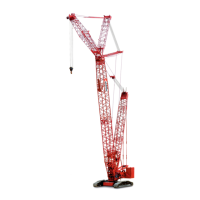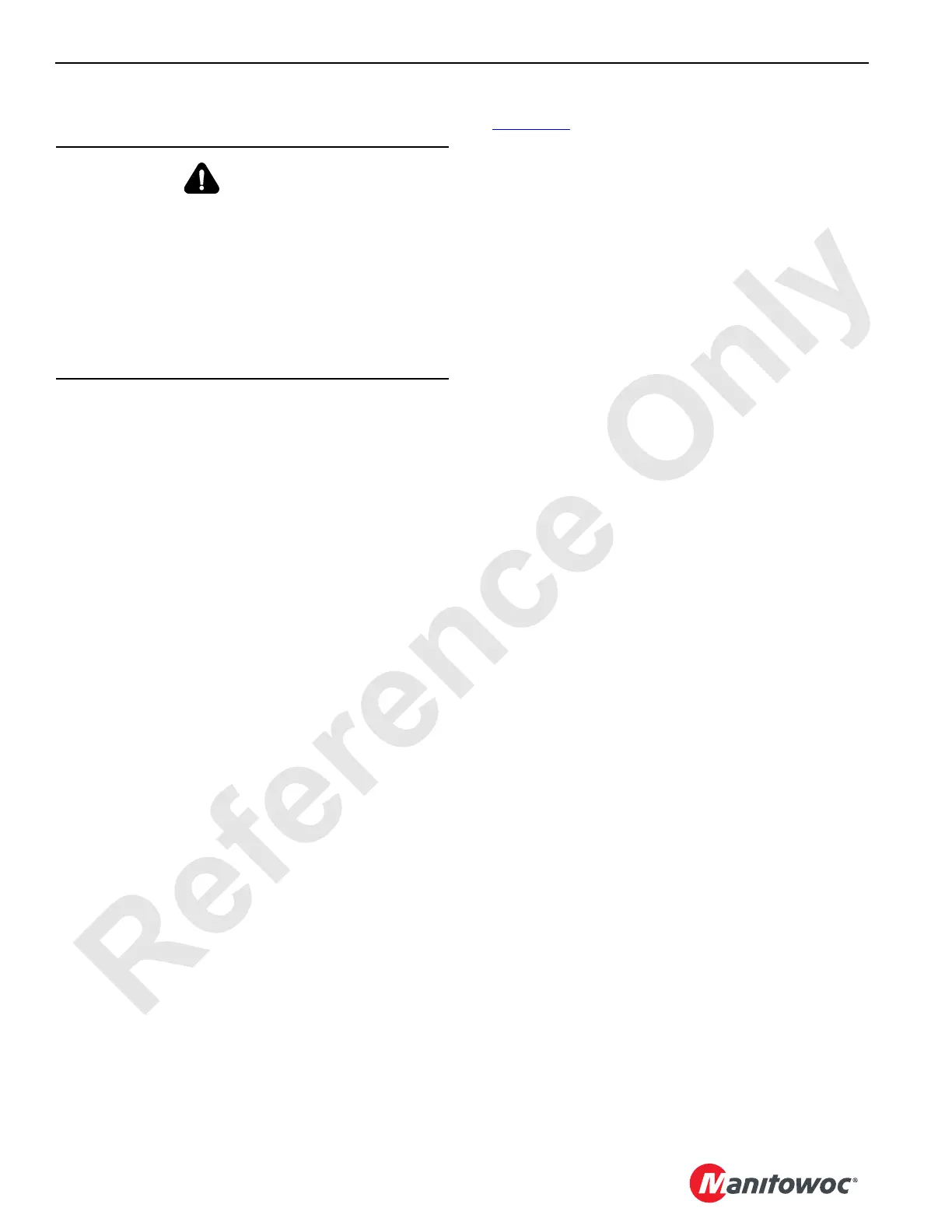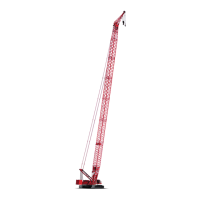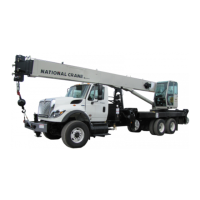OPERATING CONTROLS AND PROCEDURES 18000 OPERATOR MANUAL
3-82
Published 12-05-17, Control # 032-23
WIND CONDITIONS
Wind adversely affects lifting capacity and stability as shown
in Figure 3-52
. The result could be loss of control over the
load and crane, even if the load is within the crane’s capacity.
Wind speed (to include wind gusts) must be monitored by job
planners and supervisors.
Beware that wind speed at boom point can be greater than
wind speed at ground level. Also beware that the larger the
sail area of the load, the greater the wind’s affect on the load.
As a general rule, ratings and operating speeds must be
reduced when:
Wind causes load to swing forward past allowable
operating radius or sideways past either boom
hinge pin.
For wind conditions specific to this crane and its
attachments, see the Wind Conditions publication at the end
of this section or, if applicable, the Capacity Charts provided
with this crane and its attachments.
WARNING
TIPPING CRANE HAZARD!
Judgment and experience of qualified operators, job
planners, and supervisors must be used to compensate
for affect of wind on lifted load and boom by reducing
ratings, reducing operating speeds, or a combination of
both.
Failing to observe this precaution can cause crane to tip
or boom and/or jib to collapse. Death or serious injury to
personnel can result.

